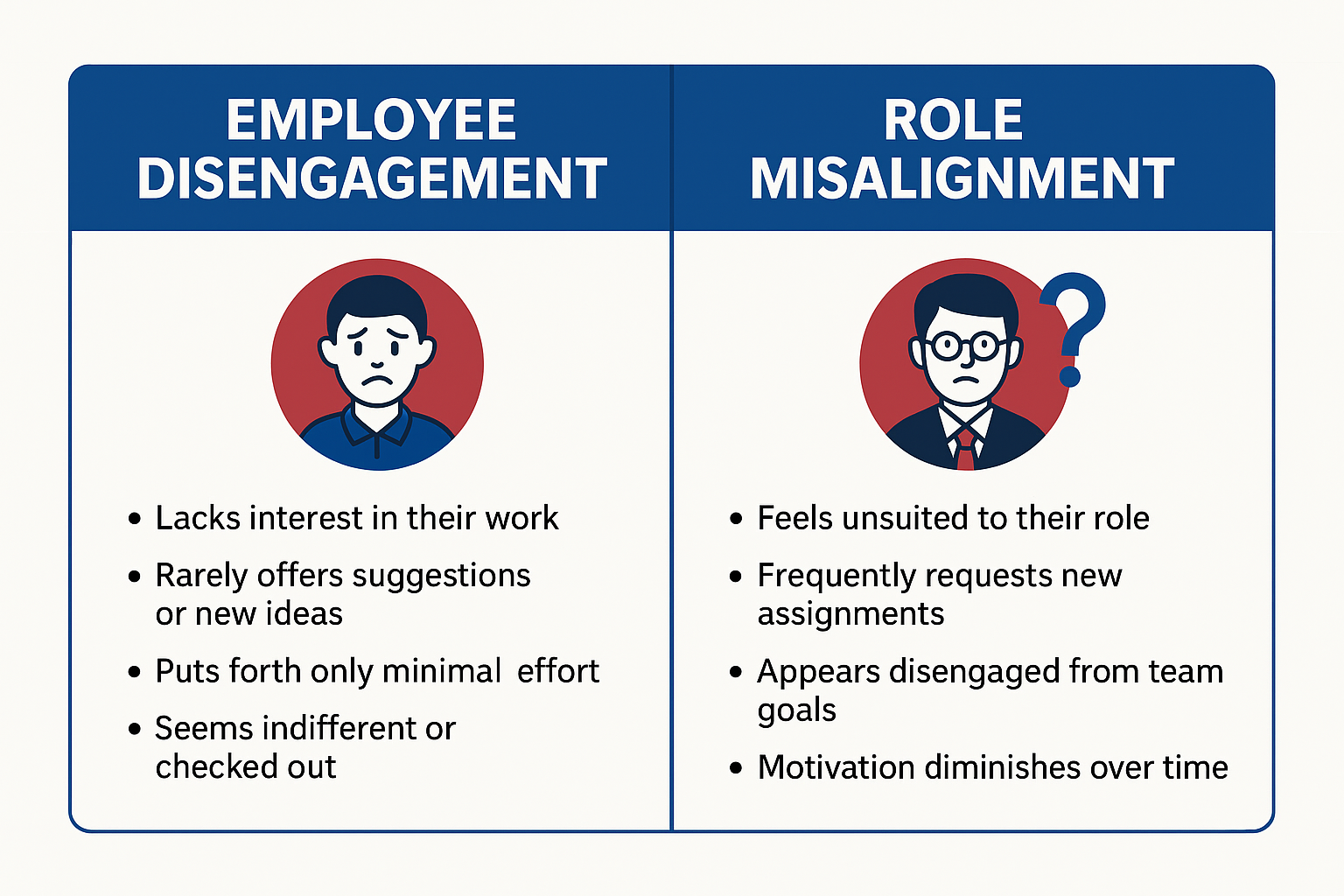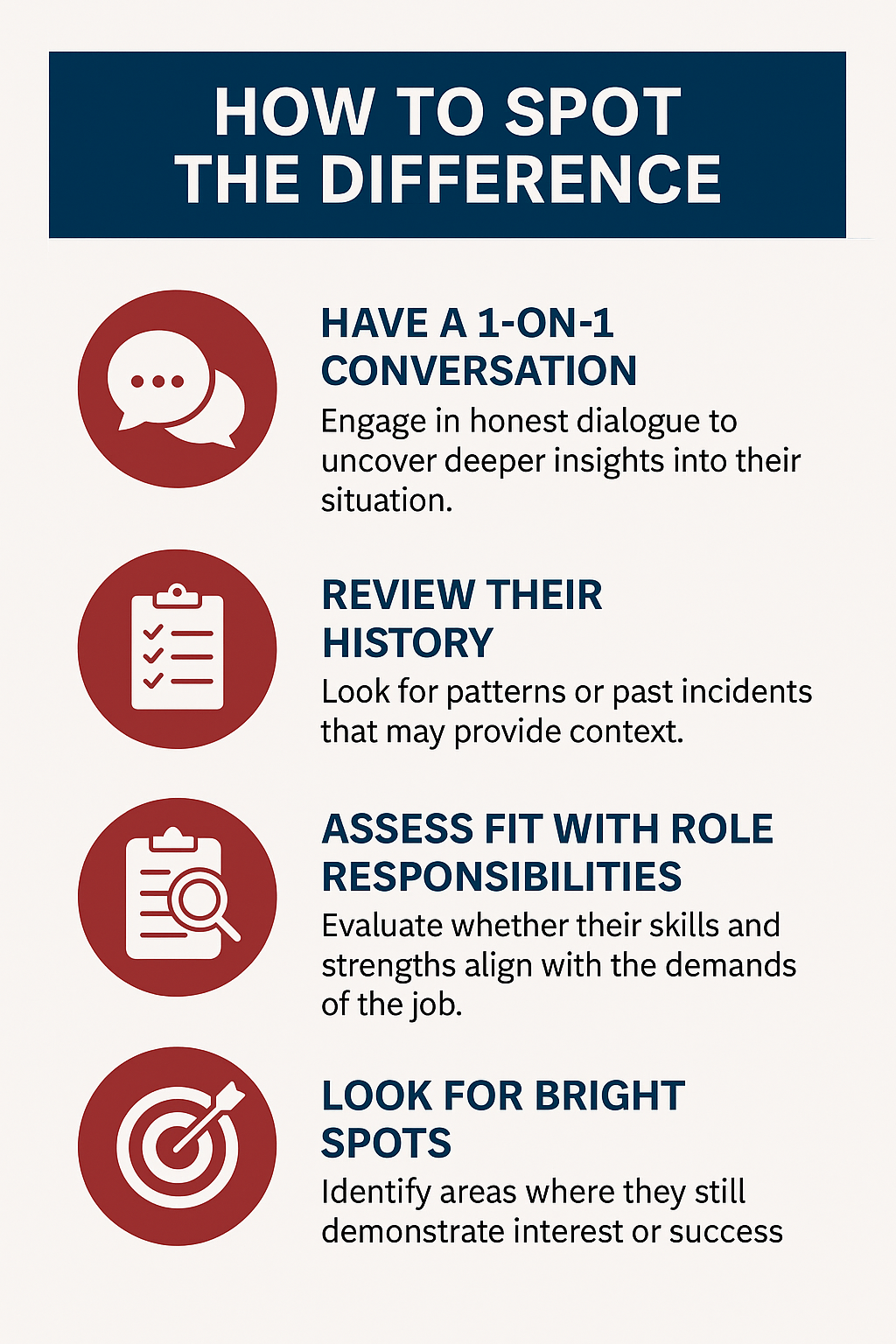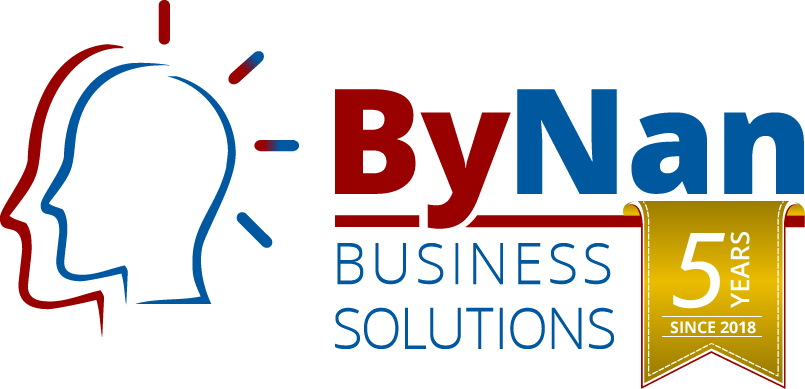As a business owner or team leader, few things are more frustrating than watching a team member check out. They used to be proactive, reliable, and engaged. Now they seem distracted, disinterested, and disconnected. You might be asking yourself: Are they simply disengaged? Or is there a deeper misalignment at play? Understanding the difference between employee disengagement and role misalignment is critical to your long-term team success.
The challenge is that if you misread the signs, you could end up applying the wrong solution. A hasty move — made without thorough understanding — could be a mistake that leads to higher turnover, lower morale, and wasted potential.
So let’s look at how to spot the difference and what to do to re-engage your team with purpose and clarity.
What is Employee Disengagement?
Employee Disengagement happens when a team member mentally and emotionally withdraws from their role. This doesn’t always mean they’re being lazy or difficult — in fact, many disengaged employees started off as your most committed people. Over time, if their needs, goals, or sense of purpose aren’t being met, they quietly pull away.
Common signs of disengagement include:
- Decreased initiative and enthusiasm
- Minimal participation in team discussions
- Missed deadlines or reduced work quality
- A “just doing the job” attitude
- Lack of contribution to team culture or collaboration
What is Role Misalignment?
Role misalignment, on the other hand, is when a team member’s strengths, values, or personality don’t align with the responsibilities or expectations of their current position.
This doesn’t mean they’re a bad fit for your company — just that they might be in the wrong seat on the bus. A highly analytical team member might feel drained in a client-facing role. A big-picture thinker might struggle in a detail-oriented operations role.
Common signs of misalignment include:
- Consistent underperformance despite high effort
- Frustration or stress when completing core tasks
- Strong performance in some areas, but difficulty in others
- Frequent requests to shift responsibilities or roles

Why It’s Easy To Confuse Role Misalignment with Employee Disengagement
The challenge is that disengagement and misalignment often look similar from the outside. Both may lead to lower productivity, team tension, and a drop in morale.
But how you respond as a leader will make all the difference.
If you assume disengagement when it’s actually misalignment, you risk labelling someone as a problem when they’re simply misplaced. Conversely, if you treat misalignment like disengagement, you might miss the opportunity to reposition and retain a valuable contributor.
How To Spot The Difference:
1) HAVE A 1-ON-1 CONVERSATION
Create a safe, open environment and ask reflective questions that go beyond performance. For example: “What aspects of your work feel most fulfilling? What parts feel the most draining?” These conversations help uncover hidden frustrations, unspoken needs, and areas of potential realignment.
2) REVIEW THEIR HISTORY
Reflect on how their behaviour and engagement have changed over time. Were they once a top performer? Did a team restructure, workload shift, or leadership change occur? Understanding context helps determine whether their disengagement is temporary or a sign of a deeper issue.
3) ASSESS FIT WITH ROLE RESPONSIBILITIES
Use frameworks like a job scorecard or DiSC assessment to evaluate whether the team member’s natural strengths and behavioural tendencies align with their current responsibilities. If not, you may need to adjust their role or provide targeted support.
4) LOOK FOR BRIGHT SPOTS
Even when someone is struggling, they likely still show enthusiasm or strength in certain tasks. Identify those bright spots — whether it’s creative problem-solving, mentoring others, or managing systems — and explore whether you can expand their responsibilities in those areas.

What To Do Next:
If it’s Disengagement:
Reconnect to Purpose: Help them understand how their work contributes to the bigger picture.
Reset Goals: Clarify expectations and give them something to work toward.
Provide Support: Disengagement can stem from burnout or personal struggles. Ask how you can help.
Recognize Wins: Celebrate their contributions, even the small ones, to rebuild motivation.
If it’s Misalignment:
Reassign or Redesign: Explore opportunities to shift responsibilities to better suit their strengths.
Invest in Development: Provide training or mentorship to build skills for a better-fitting role.
Involve Them in Solutions: Ask how they envision themselves adding the most value to the company.
Think Long-Term: Could this team member thrive in a different role six months from now? Plan ahead.
The Bottom Line:
Your team isn’t just made up of job titles — it’s made up of people. And people evolve. If someone is disengaged, don’t write them off. And if they’re misaligned, don’t assume they don’t belong.
A great leader knows that the real work lies in understanding what each person needs to grow and helping them find their best path forward. The more clarity you gain on the difference between disengagement and misalignment, the more equipped you’ll be to build a truly resilient, motivated, and high-performing team.

